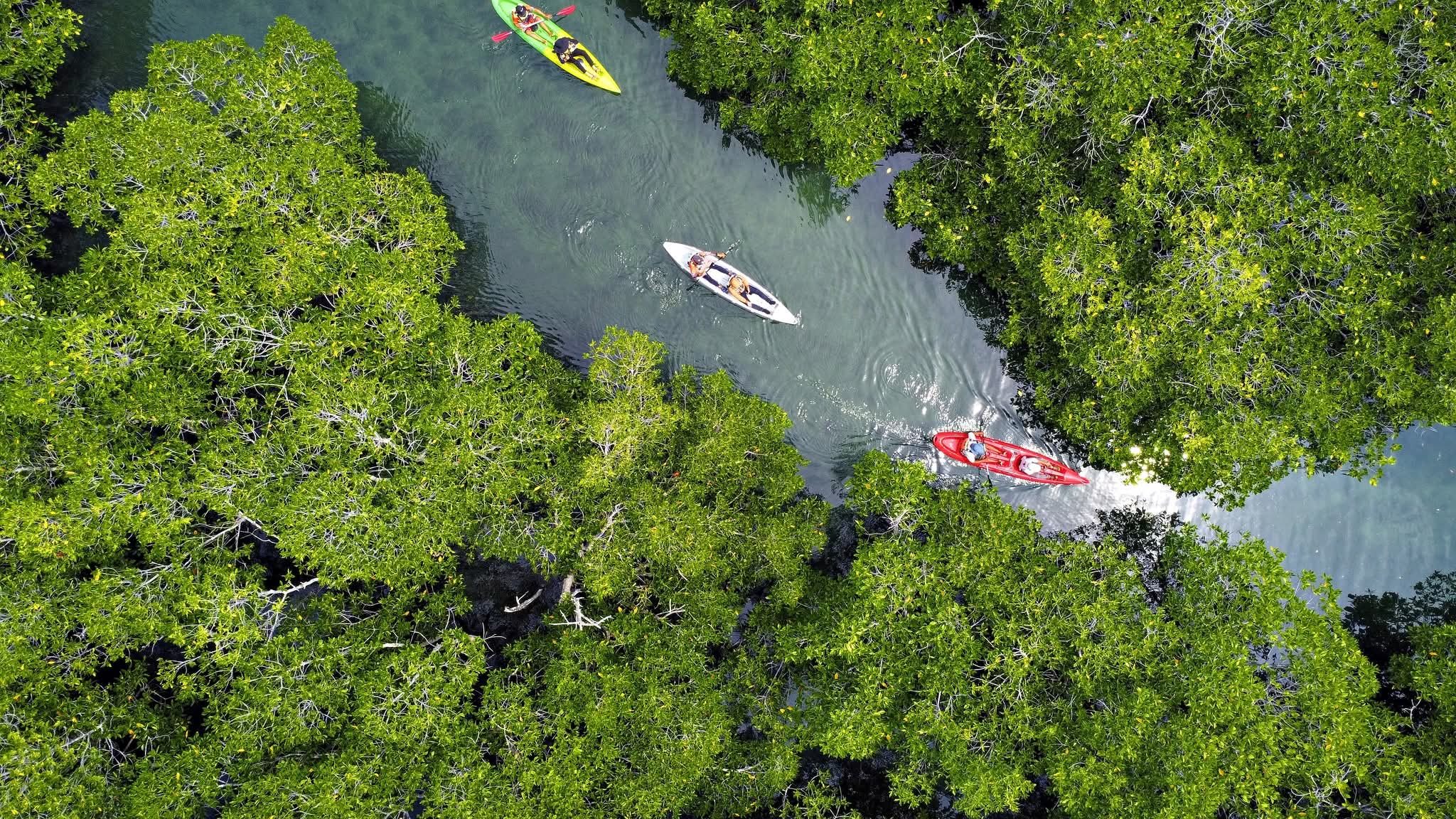Physical Address
304 North Cardinal St.
Dorchester Center, MA 02124
Physical Address
304 North Cardinal St.
Dorchester Center, MA 02124

This is AI generated summarization, which may have errors. For context, always refer to the full article.
Beneath Lapus-Lapus Macapagao’s green canopy thrive coral reefs, dense seagrass beds, and marine life such as blue swimming crabs — all part of an ecosystem largely untouched for generations
NEGROS OCCIDENTAL, Philippines – Where land gives way to the sea, and the sea gives way to roots, a dense maze of decades-old mangroves rises from the tide. Welcome to Lapus-Lapus Macapagao, a 364.2-hectare mangrove forest in Barangay Bulanon, Sagay, which is the newest jewel in northern Negros Occidental’s eco-tourism crown.
The name Lapus-Lapus, which means “maze” in the local dialect, perfectly captures the intricate waterways and tangled roots that shape the coastal wilderness. Lately, it has become a magnet for both foreign and local visitors searching not just for escape, but communion with nature.
Just 16 kilometers from the Sagay City proper, accessible to motorcycle taxis, the coastal enclave is a scenic detour with its living, breathing sea forest, which is home to nine species of mangroves.

Beneath its green canopy thrive coral reefs, dense seagrass beds, and marine life such as blue swimming crabs, which are all part of an ecosystem largely untouched for generations.
Tourists can enjoy a natural sea relaxation and engage in activities in Lapus-Lapus Macapagao such as kayaking through the mangrove maze, swimming, and partaking of the day’s freshest seafood catch.
Some 326 hectares are being developed as an eco-tourism zone. A blue swimming crab sanctuary is also in the works.
Sagay tourism officer Helen Arguelles said visitor numbers are strictly limited though to protect the area, with only 10 floating cottages available, each accommodating a maximum of 20 people. She added that the local government is focused on promoting quality over quantity in its eco-tourism efforts.
Daily visitor caps are set at 200. No loud music and overnight stays are allowed.
Sagay’s tourism program is anchored on a broader goal: conservation. With its intact reefs, seagrass beds, and marine life, Lapus-Lapus Macapagao is an emerging tourist destination as well as a vital biodiversity area.
That mission recently gained international support. In June, US-based nonprofit Seacology, which specializes in protecting island habitats, partnered with the city government to strengthen conservation efforts.
Seacology also added Lapus-Lapus to its list of 445 conservation projects across 71 countries.
The group funded a P2-million kayak center and watchtower project to allow visitors to explore the mangrove maze for over an hour, depending on paddling speed.
The watchtower will serve not only as a launch point for kayak tours but also as a biodiversity monitoring hub, aimed at improving ecosystem protection through community-led initiatives.
Arguelles said the partnership has boosted Sagay’s two-year-old effort to conserve Lapus-Lapus while managing tourism within sustainable limits.
Seacology’s field representative in the Philippines, Ferdie Marcelo, said the group returned to Sagay due to the city’s strong track record in environmental protection and eco-tourism. He cited the local government’s consistent performance in managing ecological programs.
Sagay is no stranger to global recognition. It is already home to the 31,200-hectare Sagay Marine Reserve, the award-winning Suyac Island Eco-Park, and Carbin Reef, all showing what can happen when a community embraces environmental stewardship.
Though relatively new to tourists, Lapus-Lapus Macapagao has been part of local memory for generations.
“It has existed since before World War II,” said Jose Roberto Togle, environmental management specialist at Sagay’s Environment and Natural Resources Office. “But its eco-tourism potentials were only discovered two years ago.”
In August 2023, the Sagay city council passed an ordinance officially designating the area as a local conservation area. What followed was a rapid transformation from overlooked coastal sprawl to a beacon of community-led conservation. – Rappler.com